Questions you should ask in the Gun Debate - Member Submission
Questions You Should Ask in the Gun Debate
Written by H.S. Huang
Edited by J.J. Song
When people are scared enough, they will gladly trade their freedom for a false sense of security. And this false sense of security will end up costing them more dearly then they ever realize.
Unfortunately, the same phenomenon is playing out in Canadian politics right now. As the Liberals’ Bill C-71 is moving through the Senate, CBC News is broadcasting a new series on the topic of gun violence in Canada. To the public who are generally unfamiliar with firearm politics, it seems to be a well presented series. But to informed observers who are better learned in this area, this series is not only misleading, but also potentially dangerous. Please allow me to explain why.
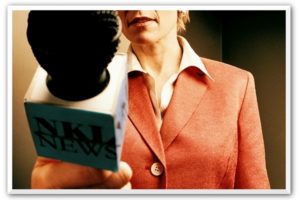
The biggest problem lies in the fact that the entire gun violence discussion focuses narrowly on the “What”, the “Who”, and the “How”, such as “Who used what gun to do the shooting”, or “How did the shooter get these guns”. While the “What”, the “Who” and the “How” are very important questions that need to be addressed, I’m afraid that we are all missing the mark on the answer to dealing with gun violence if we just keep talking about the “What” and the “Who”. When I coached engineering students on finding the root cause of a problem, I always emphasized on figuring out the “Why” first. Once one understands the “Why”, “What”, “Who”, and “How” will gradually present themselves in a clear manner. And finding the “Why” is the key to finding the root cause of any problem. (If you don’t just want to take my word for it, you can always look up “5 Why Analysis Method”) And finding the “Why” is, unfortunately what is missing from the gun violence discussion.
Just imagine for a moment that all so-called “assault weapons” and semi-automatic firearms are magically gone and all the criminals in the country are absolutely steering clear of them. Without understanding the circumstances that push disadvantaged youth into lives of crime and gangs; without understanding the deep-seeded anger and hatred that drove Alexandre Bissonnette and Marc Lepine to commit the unspeakable acts, I’m afraid that we will only see the same pattern repeated again and again, just with different weapons; perhaps pump action shotguns, commonly used for duck hunting, only sawed off and loaded with 00 buckshot; each of those shot shells contains 9 9mm projectiles. Facing an assailant armed with such weapon, you can forget about tackling the shooter while he stops to reload, because he doesn’t need to stop to reload. He can easily pump out shot after shot while keeping the magazine topped up, and he doesn’t need much training to achieve that. Also unknown to the general public, there is a military rifle in active service that Canadians with a basic non-restricted firearm license can buy, that is the venerable Lee-Enfield bolt action rifle, currently being phased out by the Canadian Rangers. These Lee-Enfield rifles, although designed over a century ago, come with detachable 10-round magazines, which are considered high capacity in many US States. They are also capable of an astonishing rate of fire; an average shooter can put out at least 10 aimed shots in 20 seconds. Don’t believe me? I’ll take you to my local rifle club!
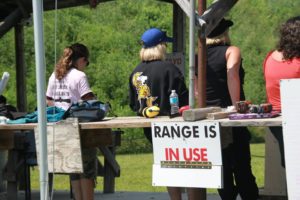
In the decades following the end of WW2, these military rifles were sold in neighbourhood hardware stores without any license requirements, and kids would take their own rifles to school. Yet, gangland shooting was much less frequent and school massacres were virtually unheard of. People have changed over time and not for the better. And why is that? Again, without understanding and removing the motives to commit murder, no law can stop this evil. Asking the wrong questions leads to misinformation, and misinformation leads the discussion astray, away from the solution.
Speaking of misinformation, the mainstream media is often the worst offender. On the topic of gun violence, I have seen my share of researched and unbiased journalism over the years (a tip of the hat to National Post) However, ironically, the information I get from the taxpayer funded CBC News seems to be among the least trustworthy. Let’s take Part 2 of CBC’s series on gun violence, aired on May 7 of this year, for example: the abolishment of the long gun registry was hinted to be the reason behind the rising firearm homicide rate from 2013 to 2017. On the surface, nothing appears out of the ordinary. However, if you are familiar with the data, you’ll know that the year 2013 had the lowest firearm homicide numbers in 2 DECADES! And because of that, the Liberals, and most media, like to use this year as the basis for comparison to justify their claim. But if one compares the 2017 firearm homicide number to the one from 2008 or 2004, when the long gun registry was still very much alive, it would appear that the homicide rate is on the way down. Not only the homicide rate was on the way down, the vast majority would be committed by gang members, who are of course known to follow all firearm regulations… And how would I know this? CBC’s own reporting from Aug 30, 2018 told an entirely different story.
And this is by no means an isolated example. The 2013 homicide number was often referenced without being put in perspective by Minister Ralph Goodale and Minister Bill Blair. Furthermore, both ministers used to tell the public that more than 50% of guns used in crime were sourced in the country. Pretty much everyone drank the cool-aid until Dennis Young, an ex-RCMP officer turned firearm policy researcher, found out, quoting government’s own data, that the firearm tracing centre would record airsoft guns, fake guns, BB guns, and guns they could not trace, mostly because the serial numbers had been removed, as “domestically sourced” by default. The result was a shamelessly over inflated 50%, while the real number was closer to 10%. By the way, the RCMP involuntarily contributed to the number of illegal guns on the black market as well. In the 10-year span from 2005 to 2015, according to RCMP’s own record, they lost over 100 firearms, including true assault rifles and a submachine gun. None of them has been recovered.
Since then, the ministers have mostly stopped quoting this figure and the media as well. However, the mainstream media still failed to tackle the one critical question: Why did they manipulate the truth?
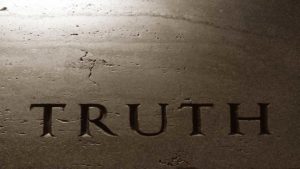
I have a nagging suspicion that the politicians, with the help of mainstream media, are making things look much worse than they really are, so that they can score some cheap political points by appearing to be doing something that’s far from effective. It’s true that gun violence numbers have gone up, but the vast majority of shootings are from gangland in Toronto and Vancouver. Criminals and gangsters do not exactly obey the laws, so what effects would added legislation have on them if we could not even effectively enforce the laws we have now? Many would point to Australia and the UK as successful examples of much tougher firearm legislations. While both countries have varying degrees of success in curbing gun violence, it’s only half of the truth. Those are island nations and hence can control their points of entry much more easily. Even with that advantage, smuggled guns are still found in both countries. While Australia remained relatively peaceful, in the UK, criminals, as expected, simply switched to other weapons, such as knives and acid; it was apparently getting so out of hand that the Mayor of London called for knife control measures.
Meanwhile in Mexico, where ordinary citizens are for all intents and purposes not allowed to own firearms, hardened criminals and gangsters enjoy virtually unchecked access to all sorts of illegal firearms smuggled in from the US. It does not take much geographic knowledge to realize that Canada’s situation is more similar to that of Mexico. As long as there are at risk youth, there are fresh recruits for the criminal underworld. And hence there is always a demand for illegal guns, bootleggers will find, and have found, ever more creative ways to bring them in by the hundreds, into a lucrative market. That’s also how Faisal Hussain, the Toronto Danforth shooter, found his illegal handgun.
On the flip side, if a bridge is only as strong as its weakest link, then the law is only as effective as the level at which it is enforced. If the existing legislation is not effectively enforced due to the lack of resources or not enforced at all, that good would even more legislation do? Before Nikolas Cruz showed up in the hallway of Marjory Stoneman Douglas High School with a semiautomatic rifle, all levels of law enforcement, from the County Sheriff Office to the FBI, had at least a dozen recorded opportunities to intervene and put an end to Cruz’s plot. However, even as Cruz was pumping round after round into his victims, the sheriffs chose to stay in their squad cars instead of stopping the shooter. As a predictable as a knee-jerk reaction, the media had a field day; the students quickly rallied and demanded more legislation to be brought forward. Again, nobody stopped to ask the critical question: Why was the existing law not enforced?
Lucky for us Canadians, the gun violence situation, while getting worse in certain parts of the country, is really not as bleak as the Liberal government and the mainstream media would have you believe. As criminology professor Gary Mauser pointed out in a senate hearing, Canadians stand a higher chance of being killed by a moose on the highway than being killed by a gun. But he also stated that focusing finite resources and energy on the wrong measures, in this case, tougher firearm laws and regulations, would shield us from seeing and addressing the real problems. Before we could effectively tackle the real problems, more people will needlessly die. The consensus reached at the 2018 Summit on Crime and Gang seemed to indicate that the better way forward is to allocate more resources and funding to frontline law enforcement and organizations that work with at-risk youth. Ironically, as Bill C-71 rolled out, the word “criminal” or “gang” did not appear even once in the entire bill. It seems to be aiming squarely at law-abiding legal gun owners. I’m pretty sure Professor Gary Mauser would like to know why that is.
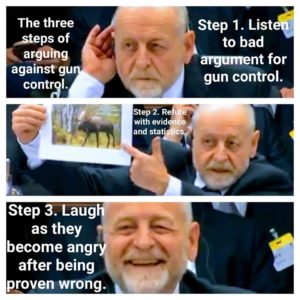
Adding legislation on top of legislation would surely make any government look like George Clooney, or Scarlett Johanson, or whoever you deem attractive. However, this is the easy answer; and easy answers are not necessarily the right answers. In terms of curbing gun violence, the right answers take deeper thinking, more resources, and more time, which is not exactly desired in this age of instant gratification. Of course, the alternative is to legislate our way into state-provided foam-padded cells and the false sense of security they provide. But eventually we will find that the false sense of security is only false; and then we will eventually be forced to confront the reality and get it right. By that time, a whole lot more time would have been wasted and lives lost.

To put it all in a more familiar analogy, I’d like to quote a saying I came across before, “To stop drunk drivers from killing people, take cars away from all the sober drivers. That’s what more gun legislation does.”
This is both my sincere plea and dire warning to all my fellow Canadians: Please don’t take the mainstream media at its face value. Always take a moment or two to do your own research and always ask why. Furthermore, if the government could do this to a group that’s over 2-million strong, just think what the government can do to you.

